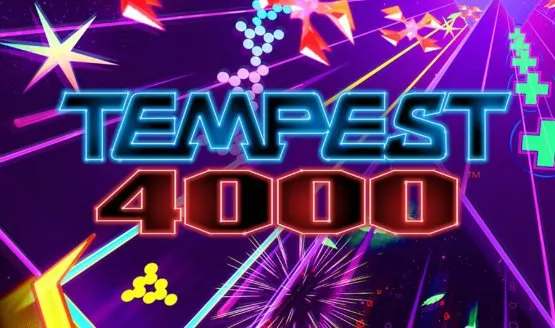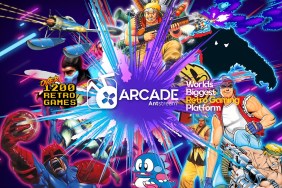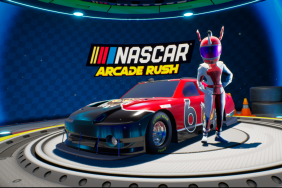In 1981, Dave Theurer and Atari released Tempest, an arcade game that approached the space shooter from a new perspective – literally. It was like Space Invaders in third person, with vectorized visuals and that psychedelic vibe that made outer space so cool in the 1970s. Programmer Jeff Minter would later leave his mark on the idea with Tempest 2000 for the Atari Jaguar, and the somewhat controversial TxK for the PlayStation Vita. A revived Atari would block TxK from launching on more platforms, but despite that rough history, the two came together for Tempest 4000, our subject today. Tempest 4000 is a new step in the classic game’s history, and while it doesn’t do much to celebrate said history, it does offer a dope new take on a frantic arcade classic that oozes appeal the moment you touch it.
The Original Geometry Wars
Tempest, and of course Tempest 4000, sees the player staring down the oncoming, geometric, alien onslaught. Enemies steadily crawl up from the three-dimensional background, and the player’s little claw-like ship fires shots down, almost like dropping bombs instead of shooting directly towards targets. The first level is a closed, circular shape, and pressing right or left causes the ship to slide along the perimeter. The original game had a dial of sorts that made the whole deal make tangible sense, but for our purposes the DualShock 4 will have to suffice. Everything looks all old-school and vectorized, with the visuals effectively forming lanes that help the player line up shots. Tempest 4000 makes the experience more bombastic, with explosions of sound and color that can fill the screen when things get violent.
One of the original distinctions of Tempest was that it was one of the first games with actual, environmental shifts. While most games simply increased the speed and enemy count, Tempest took difficulty one step further. Each level was a different shape, which the player would have to immediately adjust to. While spinning around in a circle makes plenty of sense and is more forgiving, once you’re on a single, flat line or a W-shape with momentum-killing edges, you best be paying attention if you want to make your mark on the leaderboards.
Further complicating matters are power-ups, which are great, but far from friendly. While most shooters with power-up systems present them with either a specific order or visual designations, Tempest 4000 opts for neither. Crucially, you can earn the ability to jump, but you never know when you’ll actually get it. Power-ups come at timed intervals, and they all look the same until you grab them. Sometimes, success or failure hinges on whether you can bounce your way out of a bad situation, and the stars won’t always align. It’s frustrating, but it’s also a good example of how far learning fundamentals can get anyone.
A One-Stop Shop
Tempest 4000 is an awesome game in its own right, but I do find myself a little disappointed there isn’t more to the overall package. I love that this game is being treated with the respect Tempest deserves, with a physical release that challenges the “downloadable” vibe a game like this would have had last generation. But there isn’t much in the way of content beyond the core experience. There’s a baked-in level select, and a survival mode if you don’t want to just chase the default arcade mode. Either way, the game doesn’t change much, and that’s perfectly fine. But Tempest is a significant game, and more of a red carpet treatment would have been nice.
In the past couple of years, we’ve seen a lot of extra oomph being laid into retro or retro-adjacent video game projects. Collections have come with extensive in-game libraries full of concept art, design documents, advertisement scans and more. Gaming history is become more valuable as we realize how far away it grows, and publishers are starting to go the extra mile to preserve it. This isn’t exactly being presented as a collection game of course, but I was hoping to see more pointing to the intriguing history of Tempest. Alas, I have to settle for the overall vibe, paired with Wikipedia searches. There’s a sound test buried in the “credits,” but having to sift through the credits to get to it, then having to tab through the tracks instead of having its own dedicated menu space makes it cumbersome.
Superzapper
It was tragic to see something as great as Tempest fall into obscurity, only to have the spiritual successor taken away before it could really make its mark. As weird and whiplash-y as it is, it’s just as great to see the same developer get to make a comeback and do an officially branded sequel. It feels like a dream come true, and I can’t imagine how exciting this is for the folks at Llamasoft. Sure, it could have benefited from some more bells and whistles, but Tempest 4000 is the real deal, a new version of a remarkable arcade classic that isn’t spoken of nearly as much as it deserves today. It doesn’t feel cheap or old; it’s pure game design boosted by badass music and a distinct visual style that settles comfortably into high definition. If we continue to get stuff like this from the new Atari, then sign me up.
Tempest 4000 review copy provided by publisher. Version 1.00 reviewed on a Standard PS4. For more information on scoring please see our Review Policy here.
-
Visual style retains the classic feel of the original
-
Challenging, but fair
-
Core gameplay loop is addictive, arcade action
-
Excellent electronic soundtrack with several tracks
-
Light on bonus and/or historical content
-
Sometimes hard to tell what's happening when explosions pop off
Tempest 4000 Review
-
Tempest 4000 Review #1

-
Tempest 4000 Review #2

-
Tempest 4000 Review #3

-
Tempest 4000 Review #4

-
Tempest 4000 Review #5










